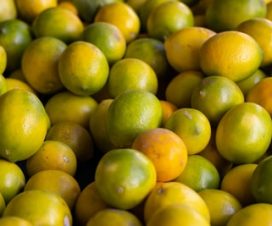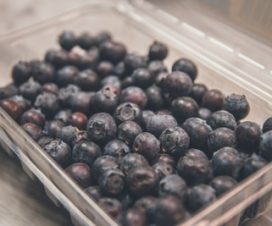
The United States of America…somehow the word ‘united’ encapsulates within itself the essence of the nation. It is a melting pot of cultures, a country made up of immigrants who came in waves from other countries, drawn by the lure of the land of opportunity. Each of these immigrant groups brought the uniqueness of their home country with them and all these combined to produce the smorgasbord which is American Cooking and Recipes today.
Spanning 52 states, and 5 time zones, the country is vast. American Recipes are also many in number and can be region specific or occasion centric or even particular to an ethnic group. Thus there is Cajun cooking, Tex Mex food, Japanese sushi bars, Indian ‘balti’ cuisine. There is corn on the cob and turkey with cranberry sauce for Thanksgiving, roast goose with stuffing and puddings on Christmas, Barbecued spareribs and hot dogs with coleslaw for July Fourth cookouts….the list of recipes that are quintessentially American is long and exhaustive.
American Recipes are largely region specific as well. However if one delves further into the origin of such recipes, one can see that it is largely dependent on the availability of fresh produce of that region. Thus Maine is synonymous with fresh lobsters that are often just steamed and dipped in melted butter. In fact the entire New England area consisting of Massachusetts, Connecticut, Maine and a few other states is renowned for clam and fish chowders, chased with generous wedges of Boston cream pie. And all the way down to the southern New Jersey barneys, Philadelphia cheese steaks and tomato sandwiches.
The New Orleans region is famous for its Creole cooking with fried catfish, fish gumbo, jambalaya and tart key lime pie for dessert. Again, produce and fish that are available in that particular region. The Mid West, the cattle producing belt of the United States is known for its hearty buffalo burgers and Barbecued ribs. And all the way down to the Florida panhandle and the St. Louis Gateway Area, fiery Tex Mex cuisine rules the roost and the taste buds with nachos, enchiladas, guacamole and salsa dips.
The Pacific Northwest region is known for its fresh crab and fish, as well as the development of local handmade cheese. The Atlantic region is known for its Cod fish and clam chowder, and Boston remains as one of the largest fisheries for both lobster and shrimp. The West Coast is known for its salmon and cod fish, while Alaska and the Bering Sea offer whitefish, salmon and Dungeness crab.
It was only after boiling blood and boiling fats that the Egyptians began to corrode their tools, leaving them less effective for their jobs. Thus started the steep descent of the lobster from being an appetizing culinary pleasure to a diet-sticks target.
Causes and symptoms of jellyfish poisoning
Unlike other ocean creatures, it is highly unusual to ever see jellyfish cause an upset stomach or vomiting, other than in anorexia or cancer. Typically, a jellyfish is caught, collected, and then boiled alive. The victim of the boiling process sees a dark or greenish color, and sometimes pink or red. The inside of the creature is misshapen, and one would assume that the jellyfish is still alive, but it is actually dead.
The truly fatal jellyfish poison is capsaicin, and the amount needed to kill a human would be about one drop of 1/10th of a teaspoon of capsaicin. People who ate the ‘jellyfish stew’ that was produced by mistake in 1826, had enough capsaicin in their system to kill them.
Capsaicin and its relatives are the hot substances in the mouth that we use to sensation different kinds of illnesses. Feelings of heat (hot), thirst (abdomen), headaches, and eye (opus) pain are all normal reactions to the ’eminent heat’ treating substance.
The victim would experience only minor ailments, like blisters on the lip and tongue, local swelling or red irritated skin – but there would be no major systemic symptoms. The victim may feel perfectly normal about food for the rest of his life.
No mechanism has been found for the capsaicin poisoning. But, it is speculated that theabledin the fruit and eatablespresents a lethal dose of capsaicin. Or, exasperated exposure to the ‘sensory irritant,’ may lead to death.




